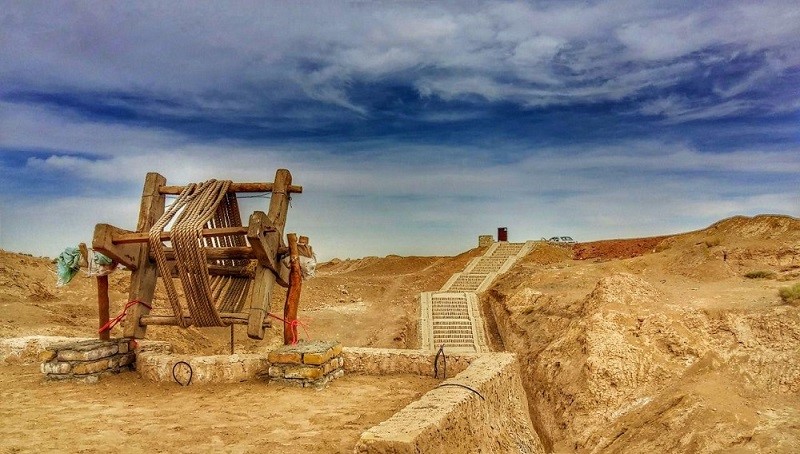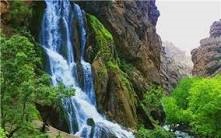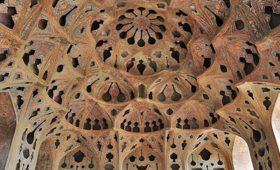Three thousand years ago, Iranian farmers living in arid and desert areas of the country, launched a new initiative to be able to irrigate their fields on dry and waterless days. In this initiative, that is considered a masterpiece of Iranian architecture, farmers dug an Qanats or karez to draw water from boiling springs to dry and low-water areas under their cultivation; A solution that soon spread around the world.
Now, out of 40,000 Qanats that are still active in Iran today, 11 unique Iranian Qanats are included in the UNESCO World Heritage List. In the following, we will introduce these unique Iranian Qanats.
1. Gonabad Qasbeh Qanat
Qasbeh Gonabad Qanat with a depth of 300 meters, the deepest mother well in the world and with 2500 years old, has been registered as the oldest and of course the most watery Qanat in the world. More than 470 wells have been drilled along the route to prevent the wells from becoming blind for a variety of reasons. This Qanat, with its winding and labyrinthine path, deep and dark, as well as its eerie atmosphere, shows the style of Qanat construction of its predecessors. The pottery found along the Qanat dates back to the Achaemenid period. Gonabad did not have any other Qanats and wells in the past, and the Qasbeh Qanat is the same karez that has given life and prosperity to this important city today.
2. Zarch Garden Qanat in Yazd
Zarch Qanat with 120 km length and 2.115 wells is the longest Qanat in Iran. This 3,000-year-old Qanat was dug at a depth of 23 meters and had good drainage until 150 years ago. However, digging several wells along the route of this canal has drastically reduced the water level in it, and global attention to this Qanat can revive it once again.
3. Baladeh Ferdows Qanat
Baladeh Qanat in Ferdows, belongs to the Sassanid period. However, pottery found around the Qanat dates back 2,000 years. Baladeh karez puts 15 Qanats and 4 springs together and forms a watery atmosphere. This Qanat is the mother of villages such as Baghestan Bala and Pa’in and Islamieh and along its 35 km route, it rehabilitates 2.382 hectares of agricultural land and 1800 plots of gardens.
4. Goharriz Joopar Kerman Qanat
The 750-year-old Goharriz Qanat belongs to the Safavid period and is one of the most active Jopar Qanats today. The Qanat, with 129 wells along its 3,750-meter route, irrigates about 330 hectares of land and gardens and provides drinking water to the town and villages along the route. The water of this Qanat is a suitable habitat for blind white fish.
5. Hassanabad Mehriz Qanat
This Qanat belongs to the eighth century AD. Hassanabad Qanat is dug at a shallow depth and its unique feature is that no gypsum and salt layers are formed along the canal route, for this reason, the water of this Qanat with the best quality reaches its final destination. The water of this canal is used to store water reservoirs, irrigate gardens and agricultural lands, and set up water mills. Today, however, the water of this Qanat is mostly used for irrigating gardens.
6, 7. Akbarabad and Qasemabad twin Qanats
One of the reasons for registering Bam Qanats is that they are twins. Akbarabad Qanat is in a village of the same name and is part of Reagan district of Bam, that irrigates 16 hectares of agricultural land and gardens with 35 wells along its 1100-meter route. But the Qasemabad Qanat supplies water to 100 hectares of agricultural land with 50 wells along its 2,300-meter route.
8. Mazdabad Qanat of Isfahan
2000-year-old Mazdabad Qanat is the second ancient Iranian Qanat that has been dug with a length of 18 km at a depth of 100 meters on the road between Shahinshahr and Meimeh. The great depth of this Qanat has led to the formation of unique features in it. Mazdabad is similar to an underground river that, due to calcareous crystallizations and the formation of stalagmite and stalagmite fossils, has a similar appearance to Ali Sadr Cave in Hamedan.
9. Qanat Wazwan
This Qanat is also one of the architectural masterpieces before the Sassanids, whose mother well was dug in Isfahan province, south of Meimeh, at a depth of 18 meters. Wazwan, with 64 wells, travels 1,200 meters and irrigates many gardens and lands. The unique feature of Wazwan is which it has an underground barrier that can close the outlet valve and store water for the seasons when farmers need more water.
10. Our Ardestan Qanat
The 800-year-old Moon Ardestan Qanat is one of the most magnificent, strange and masterpieces among the Qanats of Iran and the world. This Qanat has a unique feature; Moon is the only two-story Qanat in the world. In the floors of this Qanat, there is a separate stream that never collides with each other. Despite the 800-year-old estimate, documents have been found that date the Qanat to pre-Islamic and Sassanid times. The obtained documents make this Qanat even more amazing.
11. Ebrahimabad Qanat This Qanat is located on the way from Qom to Arak, belongs to the fifth and sixth centuries and has been dug with strange intelligence and architecture. This Qanat with 348 wells is 11 km long and in addition to supplying drinking water to Ebrahimabad village; it supplies about 100 hectares of rural lands. The unique feature of Ebrahimabad is its conical; This Qanat is the only conical Qanat in the world. Going into this cave is very difficult due to its cone and lack of access to the walls, watering of the walls and absolute darkness, and during the last 100 years, only 2 locals have been able to enter it.




